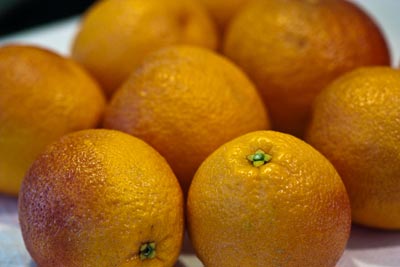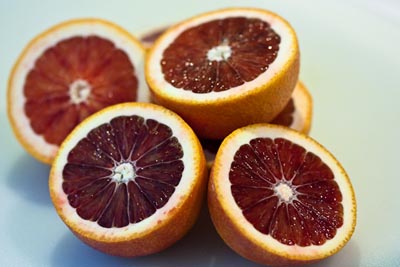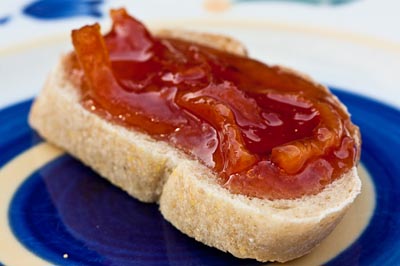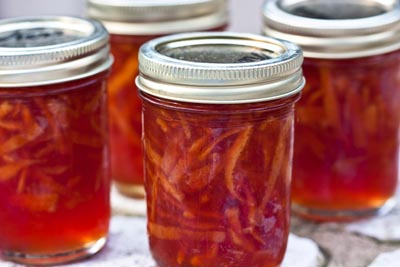This may come as a huge shock given that I’m firmly seated in central Texas, but I don’t much care for winter. While snow is beautiful and ice-coated tree limbs are ethereal, the chill that takes you when the bitter mid-west winds cut through your coat and gloves and scarf is something that I simply do not miss. On the other hand, winter does bring a few of my favorite things to eat. It is a happy day for me, when I realize that the market is again carrying blood oranges.

Blood oranges (in my market, the variety available was ‘Moro’) are generally smaller than the big navel oranges we normally consume here in the States. Their skins are varying hues of “regular” orange to a blushing red, but it’s nothing in comparison to the color within. Their flesh ranges from red-speckled orange to a red so deep, it’s almost purple, and the flavor is deliciously complex. If you can get past the somewhat gory name, you’re in for a treat. It’s tangy and sweet (though less so) like a navel orange, but there are tiny bitter notes there as well. If the navel oranges are a bright noon sun, the blood oranges distinguish themselves by being a luxurious sunset.

But the season is fleeting. My beloved blood oranges seem to disappear from the market almost as quickly as they arrive. This year, I wanted to be ahead of the game and actually capture some of sublime flavor and heady aroma to be enjoyed later in the year. To that end, I decided to make blood orange marmalade.
I’ve never made marmalade of any kind before (and in fact, have only once before set up any kind of jam or jelly for preserves), so this was going to be a bit of a process. After combing the Internet, I decided to work from a recipe for Seville Orange Marmalade by Elise at Simply Recipes. Her recipe made sense to me. She separates the orange into all its usable parts (juice / zest (peel minus the bitter white pith) / seeds and membranes (for pectin)) and then works from there.

The marmalade turned out beautifully. So far, I’ve only managed to enjoy it on toast with a bit of butter, but I love it. It tastes like a sweeter version of those delicious oranges, and the color is beautiful. I know this is probably a matter of taste, but the one thing I would do differently next time is to cut my zest differently. I love the pieces of peel in the marmalade, but I left mine so large that they can be a bit cumbersome to eat.
I also had some trouble extracting enough pectin from the seeds and membranes. To that end, I used a bit of pectin that I had on hand to help thicken the mix. (Though I will happily try it the “hard way” again next time.)
Elise’s recipe was followed to the letter with the following exceptions. Obviously, I used blood oranges instead of Seville oranges. I used two “regular” lemons instead of one regular and one Meyer (blood oranges should be sweeter than Sevilles, so I didn’t think I needed the sweetness of the Meyer lemon). I used a plain old wooden citrus reamer and juiced my oranges over a strainer. And finally, after filling and closing the jars, I processed them for 10 minutes in boiling water to ensure a good seal.

In the end, I have four 8-oz jars of marmalade to put up for later and one more jar to enjoy immediately. For what amounts to between $7-8 worth of ingredients (I already had the jars and lids and canning equipment) and a bit of time, I have captured a bit of that blood orange bliss that I ordinarily only get to enjoy for 2-3 months a year.